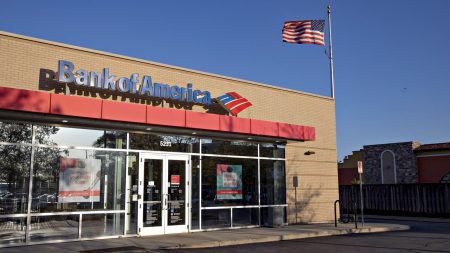Key takeaways
- Keep your emergency savings in an account that offers easy access and a competitive interest rate, such as a high-yield savings account.
- Avoid keeping emergency savings in cash, in illiquid accounts such as certificates of deposit or in risky investments such as stocks.
Unexpected events, such as an emergency room visit or a broken-down car, can result in major financial problems when you don’t have an emergency fund in place.
Without emergency funds to cover unexpected expenses, you might end up using a credit card and have to pay additional money in interest when going into debt. If you’re unable to pay an unexpected bill, it could also lead to a late fee and have a negative impact on your credit.
For most people, my recommendation is having enough to cover six months’ worth of expenses in an emergency fund. Self-employed, sole breadwinners or those with variable income may need nine or 12 months’ of expenses. But if you can set aside even a few hundred dollars for emergencies, that is a valuable buffer that could keep you from taking on high-cost credit card debt.
If you don’t have a fully-funded emergency next egg, you’re not alone. According to Bankrate’s latest Emergency Savings Report:
- One quarter (25%) of people would use a credit card to pay for an unexpected $1,000 emergency expense and pay it off over time, up from 21% one year ago.
- 1 in 3 Americans have more credit card debt than emergency savings.
- 59% of U.S. adults are uncomfortable with their emergency savings.
Source: Bankrate Emergency Savings Report
The best places to put your emergency savings
The best place to keep your emergency savings is in an account with a competitive annual percentage yield (APY) and easy access to your funds for when emergencies arise. Here are the best places to stash your emergency cash.
You need to be able to sleep at night with the assurance that your emergency fund has no chance of disappearing, so safety is a key ingredient. Keep your money in an account with Federal Deposit Insurance Corp. (FDIC) coverage or National Credit Union Association (NCUA) share insurance coverage and avoid high-risk investments.
High-yield savings account
A savings account offers easy access to your money and a high-yield savings account offers a competitive APY to help your money grow. You can typically find higher rates at banks that operate mostly online, as opposed to larger brick-and-motar banks. When choosing a high-yield savings account, opt for one that has:
- No or minimum fees
- No (or low) minimum balance requirements
- FDIC or NCUA insurance
- Convenient methods of withdrawal, including the speed of transfers from the account
Keep in mind that you may have a limit on withdrawals from your account, which is typically six per month, though some savings accounts do not impose these limits.
Money market account
Another option to store your emergency savings is a money market account. Like a savings account, a money market account typically offers a higher APY than a traditional savings account. With both, you often have easy access to your funds, within a potential withdrawal limit.
What sets a money market account apart from a savings account is that it often comes with a debit card or the ability to write checks, for even easier access to your savings. Right now, rates for some of the highest-yielding money market accounts are on par with high-yield savings accounts.
Ideally, your money is earning a high yield. That yield helps your money grow faster and protects your purchasing power if the account is keeping up with or outpacing the rate of inflation. Top high-yield savings accounts and money market accounts commonly earn an annual percentage yield of around 4 percent, while the inflation rate in April 2025 was 2.3 percent.
Standard bank or credit union savings account
If you have a checking account at a bank or credit union that does not offer a high-yield savings account, you can still consider opening a savings account there for your emergency fund. This can simplify your financial life by keeping everything under one roof, while distinguishing your emergency fund from the one you use for your day-to-day finances.
However, you may sacrifice the potential to earn interest. Institutions with large networks of brick-and-mortar branches may offer a pittance of yield compared with low-overhead, online-only banks.
When deciding which financial institution to opt for, check out Bankrate’s extensive list of more than 100 reviews of banks and credit unions.
Money market mutual fund
A money market mutual fund is another relatively safe place for emergency funds. Although they don’t come with the guarantee of FDIC insurance protection like most savings accounts, these conservative investments are typically low-risk and easily accessible parking spots for cash. Money market mutual funds are available usually from brokerages and mutual fund companies. They may require larger initial deposits than savings accounts or money market accounts.
Health savings account
A health savings account (HSA) is a savings account specifically designed to help you pay for certain medical expenses. While you would not keep all of your emergency savings in this account, you can designate a portion of emergency funds to help pay for eligible doctor bills or other qualified medical expenses.
Keep in mind that only those with a qualifying high-deductible healthcare plan are eligible for an HSA. There are also annual limitations on what you can contribute and restrictions on what is considered a qualified expense. If you use these funds for an expense that is not qualified, you can incur taxes or fees.
The worst places to put your emergency savings
Knowing where not to keep your money is an equally important lesson. These places can serve a valuable purpose for your other financial needs, but they aren’t designed for emergency safekeeping. This is because these accounts may not offer a chance to earn interest, easy access to your money in the case of an emergency or guarantee the safety of your investment.
Checking account
Lumping your emergency savings in with the checking account you use on a regular basis presents the challenge of making it too accessible. It’s better to completely separate savings and everyday finances. Otherwise, you will run the risk of dipping into your emergency stash with the promise that you’ll replenish it when your next paycheck arrives (and the potential to break that promise).
The other major downside is the lack of earning potential. Standard checking accounts offer nominal yields, and frequently, they don’t offer any interest earnings at all. However, you can still earn upwards of one percent APY on some high-yield checking accounts or find a checking account that offers cash back if you want to earn money on your balance.
Certificate of deposit (CD)
A traditional CD comes with a penalty for any early withdrawal of the funds. So, if you park your emergency savings in a one-year CD and wind up needing the money in four months, you’ll forfeit interest and, potentially, some of your principal, depending on how severe the early withdrawal penalty is. There are alternative no-penalty CDs, but some of these still carry access limitations and often pay less interest.
The stock market
With an average of an approximately 10 percent annual return, the stock market is great for a long-term investment strategy. But returns are not guaranteed and can vary. And you are risking losing your principal investment.
For money you need to count on and might need at any time, avoid the market at all costs.
Savings bonds
Savings bonds are a good choice for saving, just not for your emergency fund. After purchasing a savings bond, you cannot cash it in for a full year. And while these do pay interest, you would have to forfeit three months of those earnings if you cash in the bond within five years of purchase.
At home
If you’re considering keeping your emergency fund under a mattress or in a safe at home, it’s time to rethink your strategy. In the event of an at-home emergency such as a fire or theft, it creates another dire emergency: Your cash will be gone — without any way of getting it back.
Plus, you lose out on several of the benefits offered by regulated accounts, such as insurance and the potential to earn a yield. Keeping your money in a savings account as opposed to cash also allows for an easier ability to track any transactions.
In retirement accounts
It’s pivotal to save for both an emergency fund and your future retirement. However, it’s imperative to keep these separate. Retirement accounts, such as a 401(k) or Individual Retirement Arrangements (IRA) should hold money you plan on using in retirement — not to pay for an emergency. Utilizing funds from a retirement account prior to your retirement can result in paying penalties, the loss of the benefit of long-term growth and make you less prepared for your retirement.
Bottom line
If you’re struggling to build an emergency fund, it can actually help to find an appropriate place to store the fund. It makes it easier to track savings progress when savings are kept separate from funds for everyday spending.
Plus, when you shop around for the right account, you can earn a top-tier interest rate and make your savings grow faster thanks to the power of compound interest. Compare some of the best savings accounts and money market accounts as a starting point to find a home for your emergency fund.
Frequently asked questions
Read the full article here








